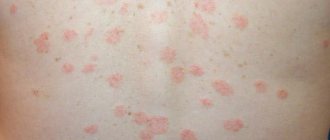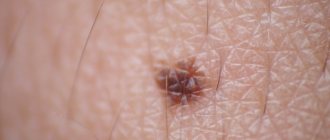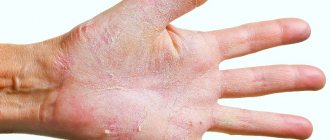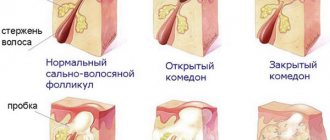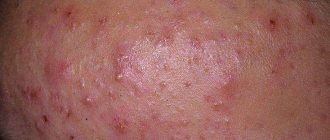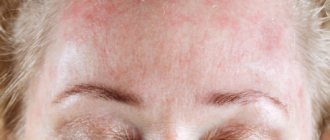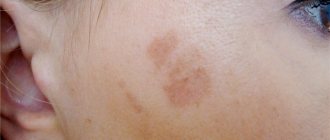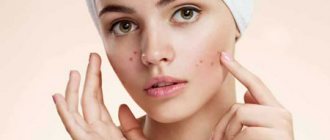Dark spots on the skin are a common phenomenon and occur in almost every person. They are easy to detect, since the pigmentation is clearly visible even on a dark skin tone. The defect does not tend to develop inflammatory processes and is not a malignant formation.
However, this does not mean that the pathology does not need to be eliminated. Foci of pigmentation can be large, which causes aesthetic discomfort to a person.
In some cases, they indicate melanoma, an oncological disease of the skin. Flaws tend to become rougher, feel dry, and have other not-so-pleasant consequences. What is it and how to deal with pigment foci we will talk further.
Causes of pigmentation
The appearance of brown spots is caused by external and internal factors. There are cases when a lesion occurs as a result of the development of a pathological process in the body.
The shade of human skin is proportional to the amount of pigments. Insufficient or excessive content of melanin and other pigments forms dark spots on the body.
Pigmented areas of the skin are a congenital or acquired phenomenon during human life. A common cause of brown spots is frequent exposure to ultraviolet radiation or direct sunlight.
This is explained by the fact that melanin, which is responsible for the dark shade of the skin, prevents the harmful effects of UV rays on the skin. The amount of hormone produced is proportional to the amount of radiation received by the skin.
Other factors that provoke pigmented lesions are associated with malfunctions of the body.
These include:
- aging;
- pathologies of the thyroid gland;
- liver diseases;
- central nervous system disorders;
- lack of vitamins and minerals;
- metabolic disorders;
- gynecological pathologies;
- incorrectly selected cosmetics;
- the period of bearing a child.
If a dark spot appears, you need to visit a dermatologist to determine the exact origin. Until their nature is clarified, do not touch these areas of the skin and do not self-medicate.
Prevention
Freckles, moles or other brown spots can be prevented. Especially during pregnancy, in old age and in the presence of white skin prone to hyperpigmentation. To do this, you should follow certain recommendations:
- Protect your skin from sunlight, use special creams and cover your face with a Panama hat.
- Do not visit the solarium.
- Sunbathe only early in the morning and in the evening.
- If a spot appears and grows, seek help in a timely manner.
If hyperpigmentation occurs in response to disturbances in the functioning of internal organs, then proper treatment under the guidance of specialists will help get rid of the problem.
Types of dark spots
Darkening of the skin comes in different sizes and shades. This is due to a certain factor that caused the problem.
Hypermegmentation
The name of the disease speaks for itself. The pathology is caused by the accelerated production of melanin in the body, which in turn is synthesized due to the high activity of pigmentation cells. The lesions spread throughout the patient's body.
Lentigo
Lentigines are brown lesions that appear as a result of excessive exposure to ultraviolet rays. The lesions are localized throughout the body in a chaotic manner.
The formations resemble freckles, but have clear edges and do not become darker when absorbing ultraviolet light. They have a smooth surface.
The danger of lentigo is the tendency of defects to deform into a malignant formation when injured. Only a specialist can distinguish the disease from freckles after conducting diagnostic tests.
Lentigo manifests itself in pregnant women, elderly citizens, when taking oral contraceptives, and in adolescents of puberty.
Dark spots on the skin resulting from lentigo are in some cases a sign of gene mutation, immune system disorders, AIDS and human papillomavirus. The causes of the pathology are organ transplants and sunburns received in childhood.
Dermatological pathologies
Dark spots on the skin of the face are a sign of the presence of acne and pimples, since these skin defects cause increased pigmentation.
Lesions appear in the following skin pathologies:
- Acanthosis nigricans. Manifests itself in the form of black defects of large diameter. They have a velvet surface. The occurrence of lesions is explained by increased cell proliferation due to increased insulin and drug therapy. Darkening appears in the neck, armpits, upper and lower extremities.
- Pityriasis versicolor. The pathology is fungal in nature. Its manifestation is expressed both in dark-colored and light-colored lesions.
- Oncology of the skin. Melanoma is a brown tumor. It is distinguished from others by the rapid growth of the lesion and bleeding.
- Poikiloderma. The pathology in its congenital form is characteristic of the female sex. The main manifestations are cataracts, damage to the hair, nail plate and bone tissue. In men it appears as brown spots on the body and genitals. It is acquired as a result of endocrine diseases, oncology, and muscle tissue diseases.
Becker's nevus
It appears as an irregularly shaped lesion. The color is yellowish or dark brown, the edges are uneven. A feature of the pathology is the growth of hair in large quantities on the surface of the defect. The risk group includes boys from 10 to 15 years old
With Becker's melanosis, dark lesions are localized on the torso, scalp, ankle and shoulders. At the initial stage, the lesion is small in size, but tends to grow rapidly up to 20 cm.
Factors that provoke pathology are hormonal imbalances and excessive exposure to sunlight. A photo of the nevus is presented on the website.
Other reasons
Women often notice spots on their bodies that look like bruises. Their color varies from yellow to blue. This pathology is explained by hemorrhage under the skin resulting from damage to the vascular network. This can be dangerous, as impaired blood circulation prevents the normal supply of oxygen to other organs.
Dark spots on the skin of the hands appear at an older age due to changes in hormonal levels during the aging process. In some cases, they indicate liver pathologies.
What kind of disease this could be will only be determined by a doctor after conducting diagnostic tests.
Pigmentation in the groin area
Dark spots on the skin between the legs are common in both men and women. Their appearance is associated with the following factors:
- Improper hair removal resulting in increased melanin production.
- Wearing tight underwear that injures the skin.
- Oncological process in the stomach. In this case, the lesion is dense with a velvety surface.
- Addinson's disease. A consequence of insufficient production of adrenal hormones. Brown blemishes are found not only in the groin area, but also in the armpits.
- Toxin poisoning.
- Fungal infection. Accompanied by itching and redness.
Only a specialist can tell you how to get rid of brown spots after a diagnosis.
Yellow
Yellowing of the skin is always caused by the accelerated breakdown of hemoglobin. In this case, the liver tissue does not have time to convert indirect bilirubin into direct bilirubin. The result of the process is an increased concentration of indirect bilirubin, a pigment that is a breakdown product. Typically, yellowness does not only spread to the skin. It is noted on the mucous membranes, whites of the eyes, palms and soles.
Diseases characterized by yellowing of the skin:
- Gilbert's syndrome;
- Cholelithiasis;
- Biliary tract stones;
- Pancreatitis;
- Parasitic infestations and helminthic lesions;
- Cysts;
- Extensive burn;
- Hemorrhage (including internal);
- Severe intoxication (chemical, food, alcohol);
- Cirrhosis of the liver;
- Hemolytic jaundice;
- Acute and chronic hepatitis.
Pigmentation in the armpits
Dark spots in the armpits are not a pathological phenomenon. But this does not mean that they do not need treatment, because the causes of their appearance are disturbances in the functioning of the body.
If dark spots appear in the armpits, then first of all they are assessed as belonging to malignant neoplasms. Soreness and rapid growth indicate the oncological nature of the lesion.
In this case, the patient needs to consult an oncologist who will tell you how to get rid of dark spots in the armpits. With timely detection of oncology, the favorable outcome is one hundred percent.
In addition to disruptions in the functioning of the body, the appearance of age spots is explained by the following reasons:
- Infectious diseases of a fungal nature.
- Disturbances in the hormonal system.
- Use of poor quality cosmetics.
Brown blemishes are normal for women carrying a child. Pigmentation goes away on its own after the baby is born.
Treatment of pigmentation
How to remove dark spots under armpits? First of all, you need to pay attention to your lifestyle. Proper nutrition, enough sleep, an active lifestyle, a calm environment at home and at work reduce the risk of age spots to a minimum.
But if the disease cannot be avoided, then medications will come to the rescue. Zinc and sulfur ointments have proven themselves well.
The following methods are suitable for the treatment of pigmented blemishes:
- Chemical peeling. Removes dead epidermal cells and is suitable only in advanced cases, as it leaves scars on the skin.
- Introduction of drugs by vacuum. A gentle method of combating the disease. Allows you to remove pigmentation at a deep level.
- Mesotherapy. Injection method of treatment. In addition to removing blemishes, it refreshes and heals the skin.
It is better not to resort to traditional medicine, as they can often be aggressive.
Traditional methods
Here's what a specialist from the Institute of Cosmetology says about this:
If we talk about folk remedies, there is no confidence in them. Lemon juice, kefir... Perhaps if you use them constantly and for a long time, there will be some effect. But it is much more likely that lemon juice or peroxide will burn the skin. And instead of bleaching, you will receive even more intense hyperpigmentation.
Only a dermatologist will tell you how to treat pigmentation after conducting appropriate research.
Principles of therapy
In order to get rid of dark spots forever, you should understand the reason for their appearance. Common areas of hyperpigmentation can be lightened at home using acids (acetic, citric) and hydrogen peroxide solution. The use of cosmetic ointments or creams (Melanativ, Skinoren, Retinoic ointment) helps to lighten dark spots on the face (freckles or lentigo) or spots on the body after pregnancy.
It is best to contact a dermatologist or cosmetologist for this purpose. They have more effective means in their arsenal - chemical peeling and other techniques.
If the formations are small, they can be removed with a laser. This procedure is considered the most modern, it is quick and without complications.
For some patients, the doctor recommends fighting pigmentation with cryotherapy and radio wave therapy.
To remove a nevus that begins to grow or shows other signs of degeneration, surgery is necessary. The excised area of damaged skin must be examined histologically .
